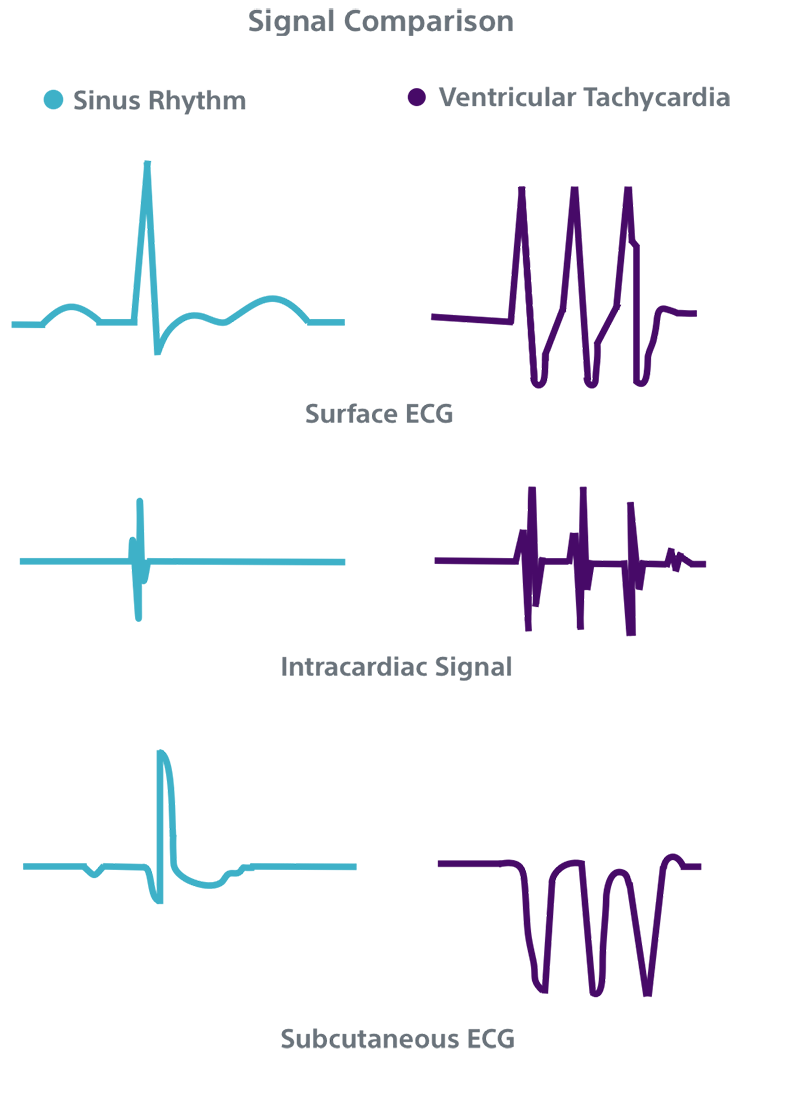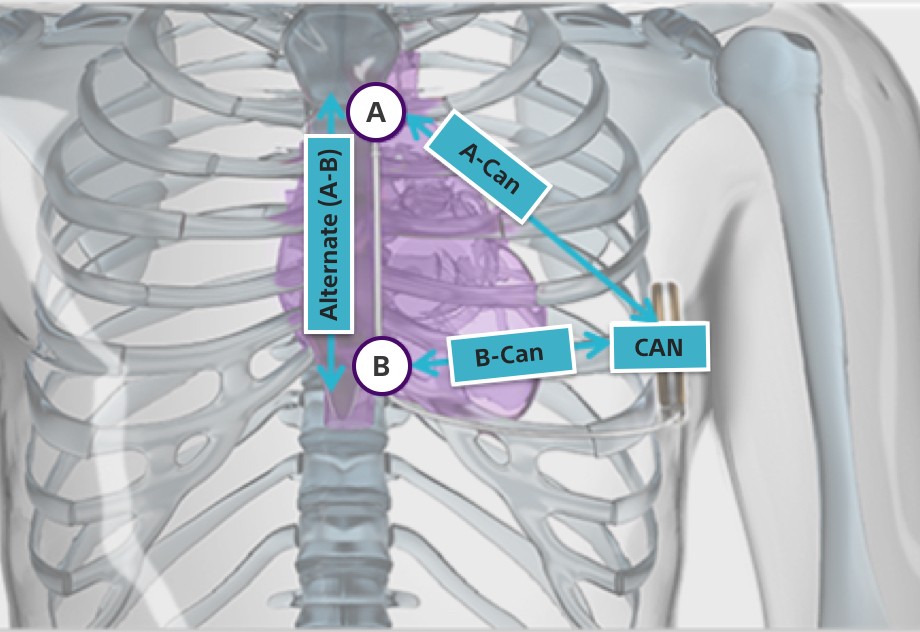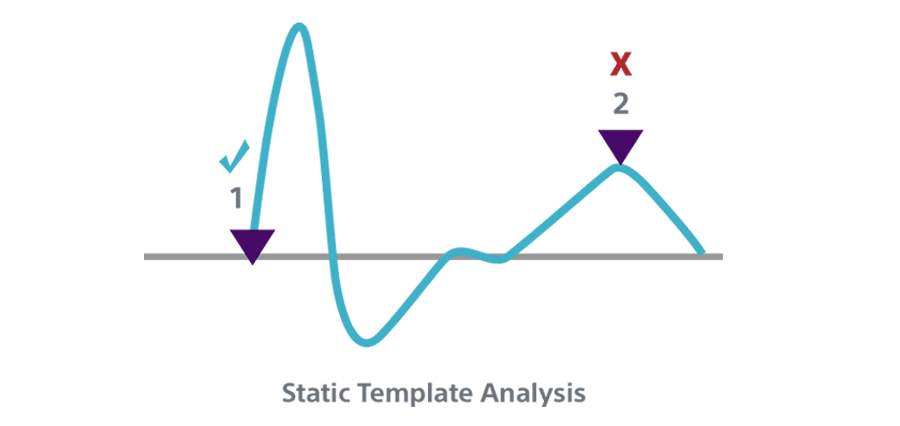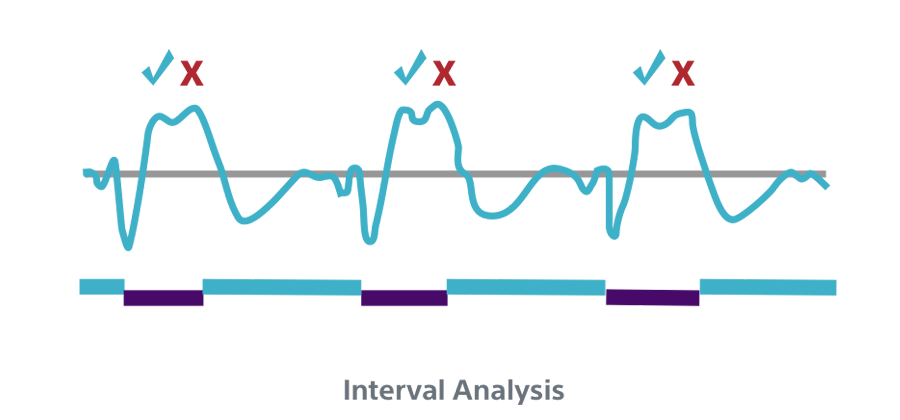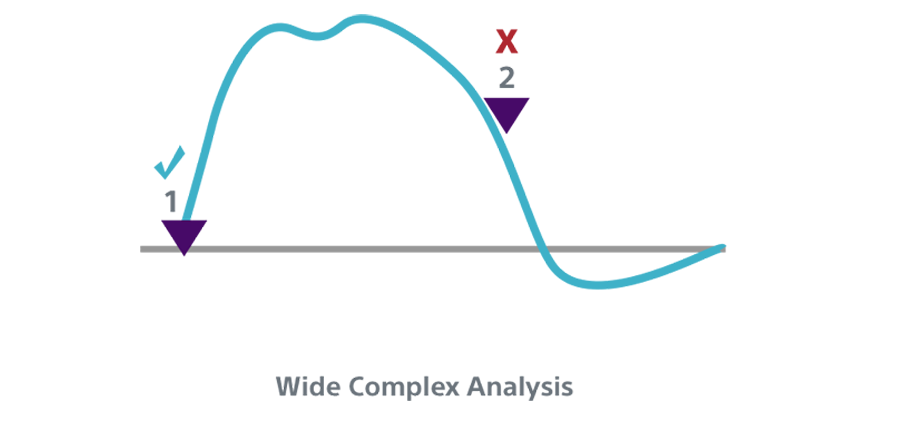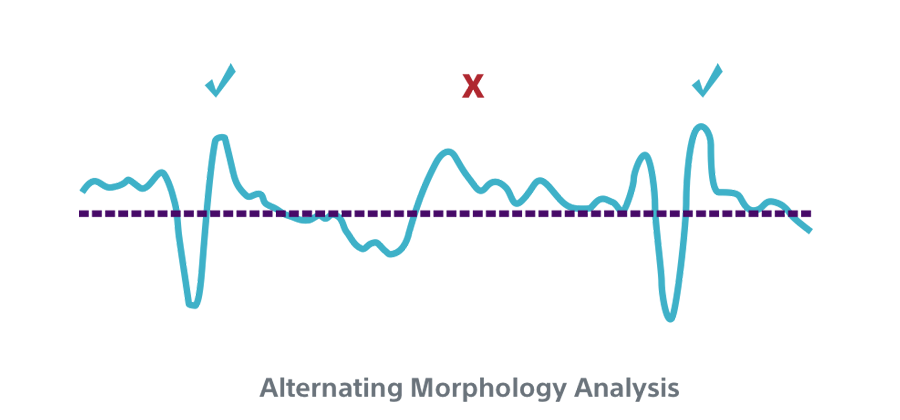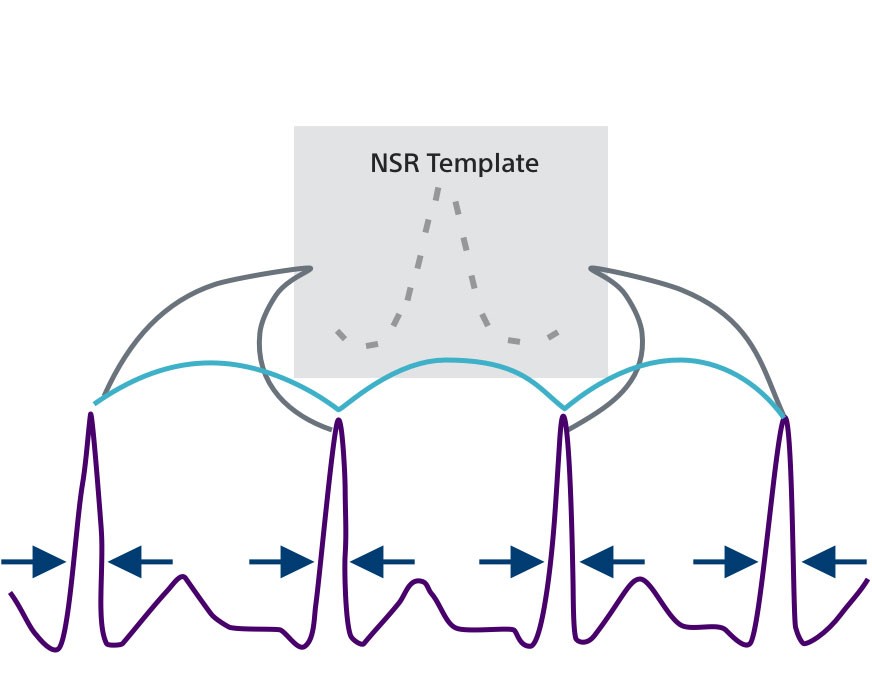EMBLEM™ MRI S-ICD System
Subcutaneous Implantable Defibrillator
Explore
The Subcutaneous Signal
INSIGHT Algorithm Architecture

PHASE I: Detection

SMART Pass Reduces Inappropriate Shocks (IAS)
The one-year IAS rates measured across S-ICD studies have decreased substantially over time due to the implementation of conditional zone programming and technology improvements to minimize T-wave oversensing, including the SMART Pass filter. The 2020 UNTOUCHED study demonstrated IAS rates for S-ICD to be half the rates for TV-ICDs as demonstrated in major studies, such as ADVANCE III and MADIT-RIT.
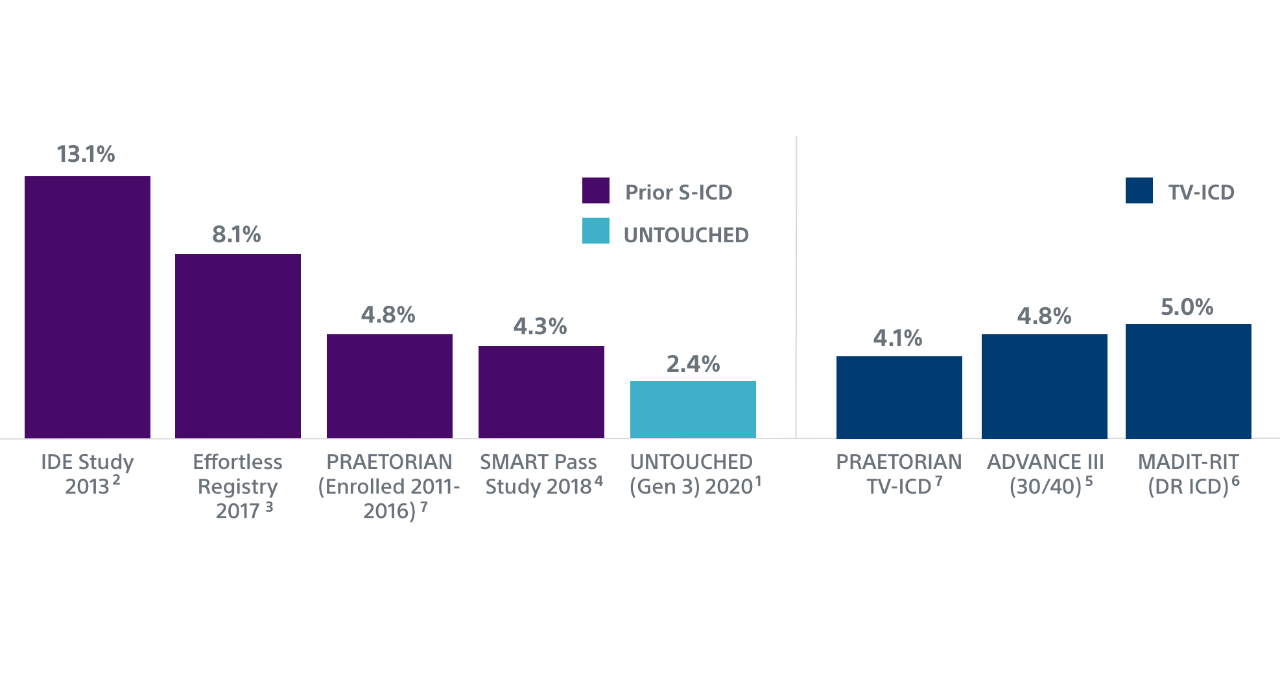
PHASE II: Certification
PHASE III: Therapy Decision

Conditional Zone Discriminators
The EMBLEM MRI S-ICD uses the following discriminators in the Conditional Shock Zone:
Static Morphology Analysis
Identifies non-shockable rhythms, utilizing the Normal Sinus Rhythm (NSR) template.
Dynamic Morphology Analysis
Identifies shockable polymorphic rhythms by comparing each complex to the previous ones.
QRS Width Analysis
Compares the QRS width to the NSR QRS width.
Confirming Therapy is Necessary
The Therapy Decision phase incorporates multiple features to confirm therapy delivery is necessary, including SMART Charge, Charge Confirmation and Shock Confirmation. The SMART Charge feature enhances the EMBLEM MRI S-ICD System’s ability to prevent charging if non-sustained events are suspected. It also automatically extends initial detection time to allow for spontaneous termination.
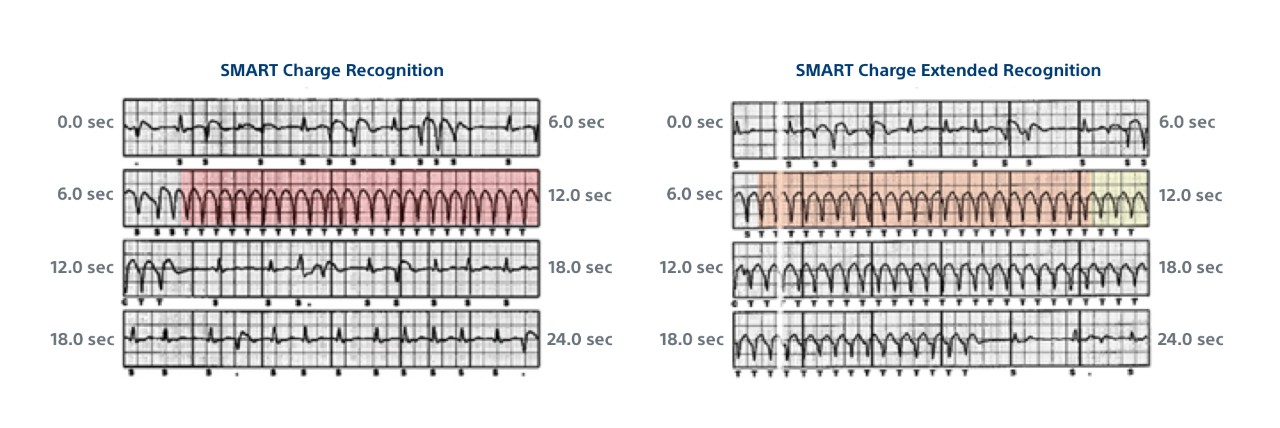
Therapy Delivery
The EMBLEM MRI S-ICD can deliver up to 5 shocks per episode at 80 J (delivered) and polarity is reversed for each subsequent shock in an episode. The S-ICD stores up to 128 seconds of subcutaneous ECG data per episode.
The S-ICD system’s Adaptive Shock Polarity remembers polarity of the last successful shock and automatically selects this shock polarity for the first shock of the next episode.
When Post-Shock Pacing is necessary, the sensing vector is switched to Alternate (A B) and pacing starts. Post-Shock Pacing will continue at a rate of 50 ppm using 200 mA, for up to 30 seconds.
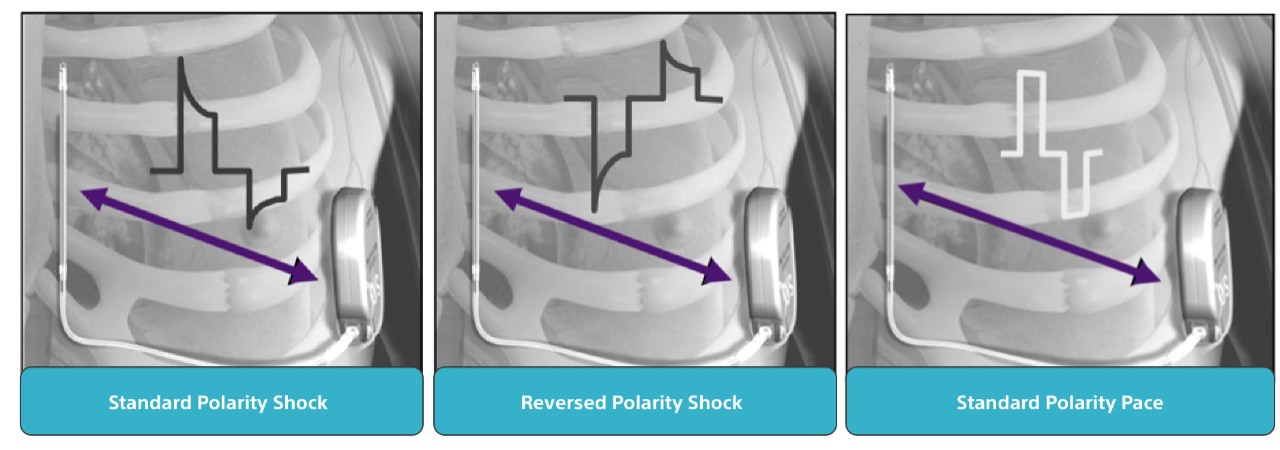
Training & Education

Explore continuing education courses, best practices modules and other training and
resources for S-ICD.
Why S-ICD?
See how S-ICD helps protect patients at risk for sudden cardiac death
while also eliminating the risk of TV-ICD lead complications.

